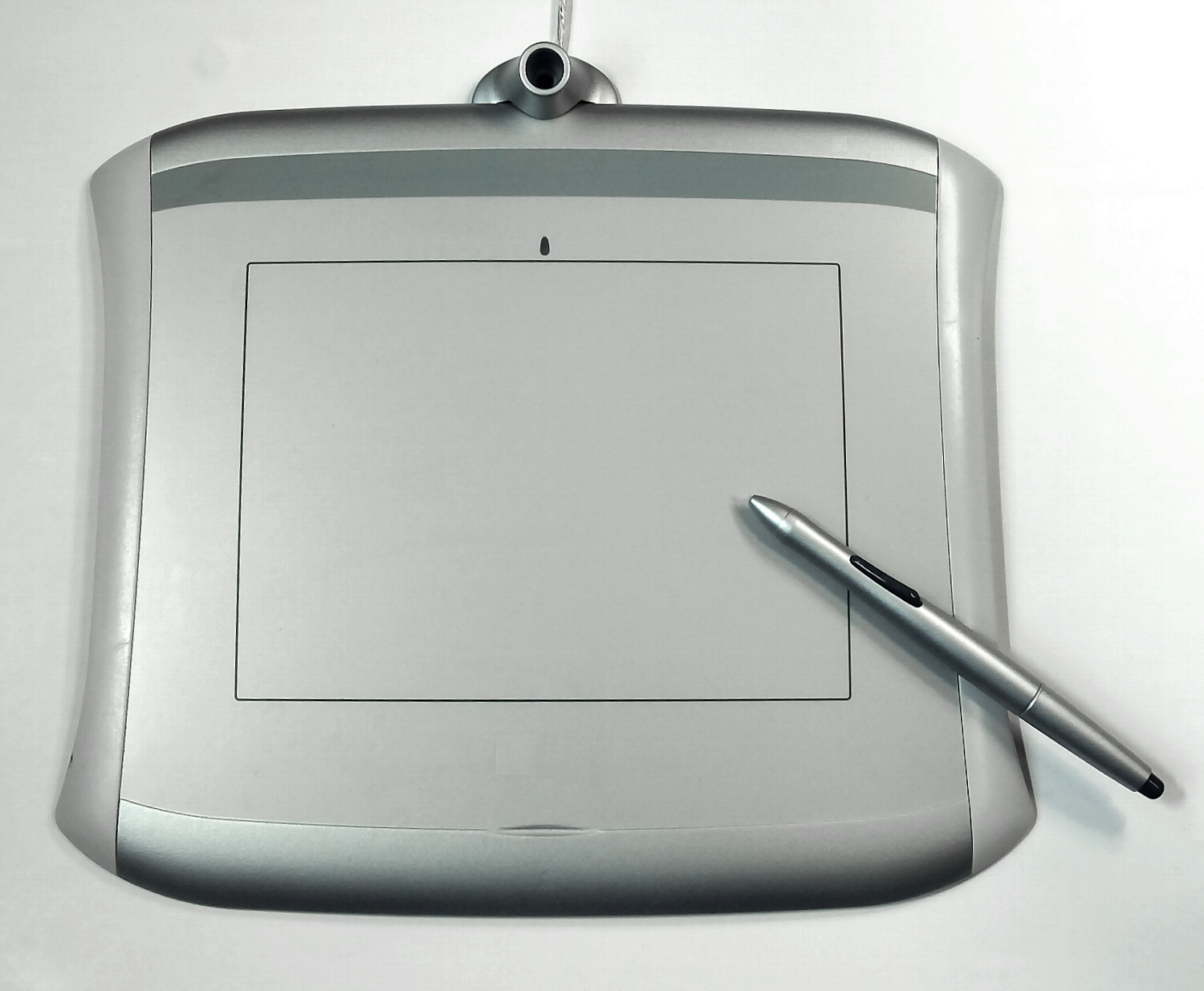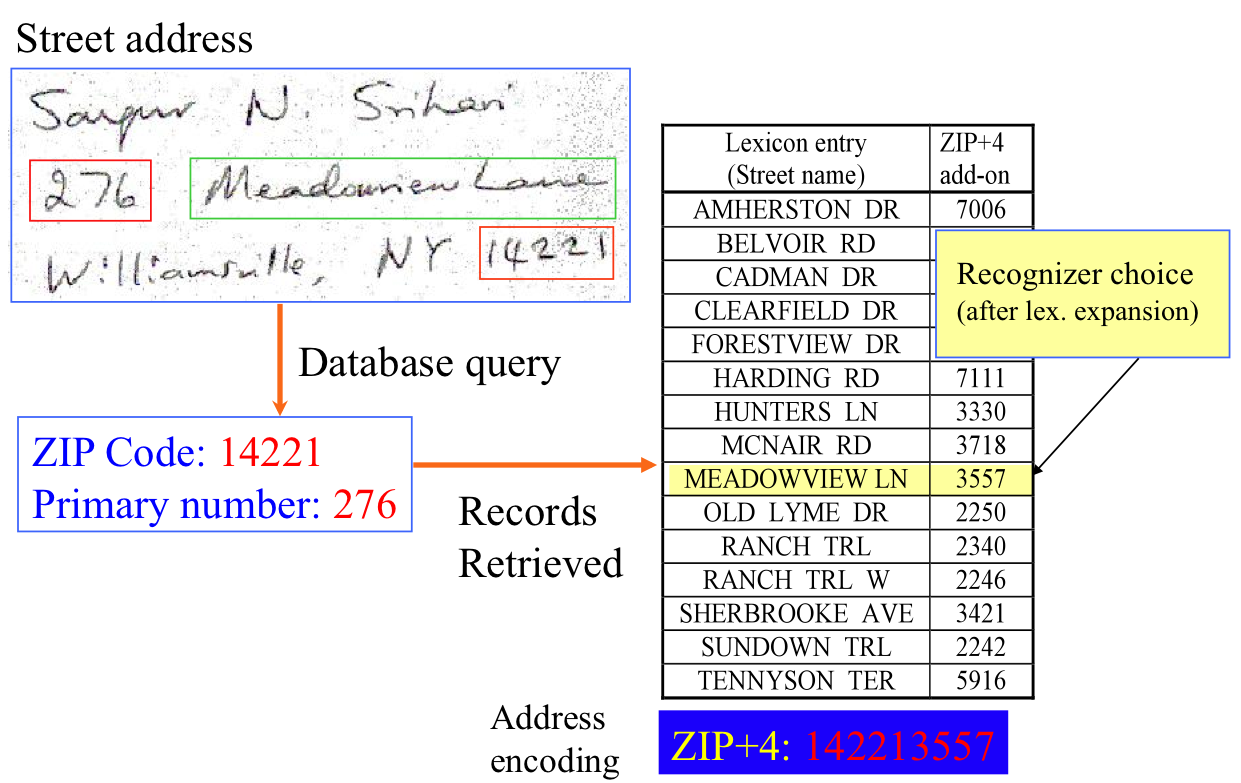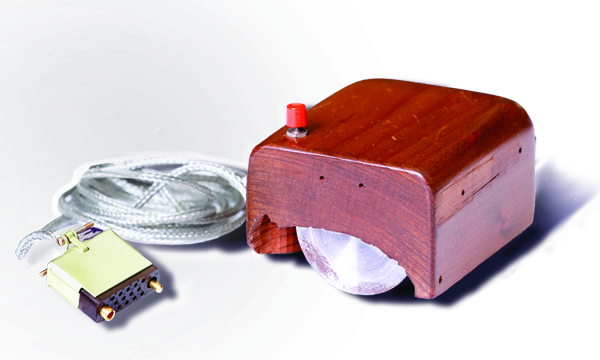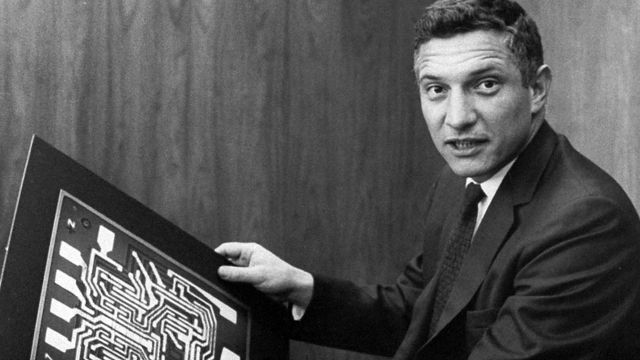|
Hewitt Crane
Hewitt D. Crane (1927–2008) was an American engineer best known for his pioneering work at SRI International on ERMA (Electronic Recording Machine, Accounting), for Bank of America, magnetic digital logic, neuristor logic, the development of an eye-movement tracking device, and a pen-input device for computers. Early life and career Crane was born in 1927 in Jersey City, New Jersey. After a stint in the United States Navy as a radar technician during World War II, he worked as a computer maintenance technician for IBM (1949–1952), followed by working on digital computer design under the leadership of John von Neumann at the Institute for Advanced Study, in Princeton, New Jersey (IAS is not affiliated with Princeton University). He then developed magnetic multiaperture devices (MADs) at RCA Laboratories (now Sarnoff Corporation). In order to develop magnetic logic, Crane controlled the direction of bit flow in magnetic ferrite memory cores. Ferrite logic circuits are inhe ... [...More Info...] [...Related Items...] OR: [Wikipedia] [Google] [Baidu] |
SRI International
SRI International (SRI) is a nonprofit organization, nonprofit scientific research, scientific research institute and organization headquartered in Menlo Park, California, United States. It was established in 1946 by trustees of Stanford University to serve as a center of innovation to support economic development in the region. The organization was founded as the Stanford Research Institute. SRI formally separated from Stanford University in 1970 and became known as SRI International in 1977. SRI performs client-sponsored research and development for government agencies, commercial businesses, and private foundations. It also licenses its technologies, forms strategic partnerships, sells products, and creates Research spin-off, spin-off companies. SRI's headquarters are located near the Stanford University campus. SRI's annual revenue in 2014 was approximately $540 million, which tripled from 1998 under the leadership of Curtis Carlson. In 1998, the organization was on the ver ... [...More Info...] [...Related Items...] OR: [Wikipedia] [Google] [Baidu] |
Magnetic Core Memory
In computing, magnetic-core memory is a form of random-access memory. It predominated for roughly 20 years between 1955 and 1975, and is often just called core memory, or, informally, core. Core memory uses toroids (rings) of a hard magnetic material (usually a Ferrite (magnet)#Semi-hard ferrites, semi-hard ferrite). Each core stores one bit of information. Two or more wires pass through each core, forming an X-Y array of cores. When an electrical current above a certain threshold is applied to the wires, the core will become magnetized. The core to be assigned a value – or ''written'' – is selected by powering one X and one Y wire to half of the required current, such that only the single core at the intersection is written. Depending on the direction of the currents, the core will pick up a clockwise or counterclockwise magnetic field, storing a 1 or 0. This writing process also causes electricity to be electromagnetic induction, induced into nearby wires. If t ... [...More Info...] [...Related Items...] OR: [Wikipedia] [Google] [Baidu] |
Graffiti 2
"Graffiti 2 Powered by Jot" was introduced in 2003 as a revised version of the original Palm OS handwriting system Graffiti. In January 2003, PalmSource announced the change explaining that Graffiti 2 was based on ''Jot'' by Communication Intelligence Corporation (CIC) and would replace the original version of Graffiti. Graffiti 2 made its debut in Palm OS 4.1.2 for Motorola DragonBall-based handhelds and in Palm OS Garnet 5.2 for ARM-based ones. History The primary reason for the change was the fact that in April 1997 Xerox Xerox Holdings Corporation (, ) is an American corporation that sells print and electronic document, digital document products and services in more than 160 countries. Xerox was the pioneer of the photocopier market, beginning with the introduc ... had sued PalmSource, Inc. over its use of Graffiti. After a legal fight lasting a number of years, and despite the dismissal of the case by a federal judge, Xerox won a reversal late in 2001 in the U.S. ... [...More Info...] [...Related Items...] OR: [Wikipedia] [Google] [Baidu] |
Palm, Inc
Palm, Inc., was an American company that specialized in manufacturing personal digital assistants (PDAs) and developing software. Palm designed the PalmPilot, the first PDA successfully marketed worldwide, and was known for the Treo 600, one of the earlier successful smartphones. Palm developed the Palm OS software for PDAs and smartphones released under its line of Palm (PDA), Palm-branded devices and also licensed to other PDA manufacturers. The company was also responsible for the first versions of webOS, the first multitasking operating system for smartphones, and enyo (software), enyo.js, a framework for HTML5 apps. In July 2010, Palm was purchased by Hewlett-Packard (HP), and in 2011 announced a new range of webOS products. However, after poor sales, HP CEO Léo Apotheker announced in August 2011 that it would end production and support of Palm and webOS devices, marking the end of the Palm brand after 19 years. In October 2014, HP sold the Palm trademark to a shelf corpor ... [...More Info...] [...Related Items...] OR: [Wikipedia] [Google] [Baidu] |
Graphics Tablet
A graphics tablet (also known as a digitizer, digital graphic tablet, pen tablet, drawing tablet, external drawing pad or digital art board) is a computer input device that enables a user to hand draw or paint images, animations and graphics, with a special pen-like stylus (computing), stylus, similar to the way a person draws pictures with a pencil and paper by hand. Graphics tablets may also be used to capture data or handwritten signatures. They can also be used to trace an image from a piece of paper that is taped or otherwise secured to the tablet surface. Capturing data in this way, by tracing or entering the corners of linear Polygonal chain, polylines or shapes, is called digitizing. The device consists of a rough surface upon which the user may "draw" or trace an image using the attached stylus (computing), stylus, a pen-like drawing apparatus. The image is shown on the computer computer display, monitor, though some graphic tablets now also incorporate an LCD screen f ... [...More Info...] [...Related Items...] OR: [Wikipedia] [Google] [Baidu] |
Handwriting Recognition
Handwriting recognition (HWR), also known as handwritten text recognition (HTR), is the ability of a computer to receive and interpret intelligible handwriting, handwritten input from sources such as paper documents, photographs, touch-screens and other devices. The image of the written text may be sensed "off line" from a piece of paper by optical scanning (optical character recognition) or intelligent word recognition. Alternatively, the movements of the pen tip may be sensed "on line", for example by a pen-based computer screen surface, a generally easier task as there are more clues available. A handwriting recognition system handles formatting, performs correct Segment (handwriting), segmentation into characters, and finds the most possible words. Offline recognition Offline handwriting recognition involves the automatic conversion of text in an image into letter codes that are usable within computer and text-processing applications. The data obtained by this form is reg ... [...More Info...] [...Related Items...] OR: [Wikipedia] [Google] [Baidu] |
Douglas Engelbart
Douglas Carl Engelbart (January 30, 1925 – July 2, 2013) was an American engineer, inventor, and a pioneer in many aspects of computer science. He is best known for his work on founding the field of human–computer interaction, particularly while at his Augmentation Research Center Lab in SRI International, which resulted in creation of the computer mouse, and the development of hypertext, networked computers, and precursors to graphical user interfaces. These were demonstrated at The Mother of All Demos in 1968. Engelbart's law, the observation that the intrinsic rate of human performance is exponential, is named after him. The "oN-Line System" ( NLS) developed by the Augmentation Research Center under Engelbart's guidance with funding mostly from the Advanced Research Projects Agency (ARPA), later renamed Defense Advanced Research Projects Agency (DARPA), demonstrated many technologies, most of which are now in widespread use; it included the computer mouse, bitmapped sc ... [...More Info...] [...Related Items...] OR: [Wikipedia] [Google] [Baidu] |
Computer History Museum
The Computer History Museum (CHM) is a computer museum in Mountain View, California. The museum presents stories and artifacts of Silicon Valley and the Information Age, and explores the Digital Revolution, computing revolution and its impact on society. History The museum's origins date to 1968 when Gordon Bell began a quest for a historical collection and, at that same time, others were looking to preserve the Whirlwind (computer), Whirlwind computer. The resulting ''Museum Project'' had its first exhibit in 1975, located in a converted coat closet in a Digital Equipment Corporation, DEC lobby. In 1978, the museum, now ''The Digital Computer Museum'' (TDCM), moved to a larger DEC lobby in Marlborough, Massachusetts and opened to the public in September 1979. Maurice Wilkes presented the first lecture at TDCM in 1979 – the presentation of such lectures has continued to the present time. TDCM incorporated as ''The Computer Museum, Boston, The Computer Museum'' (TCM) in 1982. ... [...More Info...] [...Related Items...] OR: [Wikipedia] [Google] [Baidu] |
Integrated Circuit
An integrated circuit (IC), also known as a microchip or simply chip, is a set of electronic circuits, consisting of various electronic components (such as transistors, resistors, and capacitors) and their interconnections. These components are etched onto a small, flat piece ("chip") of semiconductor material, usually silicon. Integrated circuits are used in a wide range of electronic devices, including computers, smartphones, and televisions, to perform various functions such as processing and storing information. They have greatly impacted the field of electronics by enabling device miniaturization and enhanced functionality. Integrated circuits are orders of magnitude smaller, faster, and less expensive than those constructed of discrete components, allowing a large transistor count. The IC's mass production capability, reliability, and building-block approach to integrated circuit design have ensured the rapid adoption of standardized ICs in place of designs using discre ... [...More Info...] [...Related Items...] OR: [Wikipedia] [Google] [Baidu] |
New York City
New York, often called New York City (NYC), is the most populous city in the United States, located at the southern tip of New York State on one of the world's largest natural harbors. The city comprises five boroughs, each coextensive with a respective county. The city is the geographical and demographic center of both the Northeast megalopolis and the New York metropolitan area, the largest metropolitan area in the United States by both population and urban area. New York is a global center of finance and commerce, culture, technology, entertainment and media, academics, and scientific output, the arts and fashion, and, as home to the headquarters of the United Nations, international diplomacy. With an estimated population in 2024 of 8,478,072 distributed over , the city is the most densely populated major city in the United States. New York City has more than double the population of Los Angeles, the nation's second-most populous city. [...More Info...] [...Related Items...] OR: [Wikipedia] [Google] [Baidu] |
Fall Joint Computer Conference
The Joint Computer Conferences were a series of computer conferences in the United States held under various names between 1951 and 1987. The conferences were the venue for presentations and papers representing "cumulative work in the omputerfield." Originally a semi-annual pair, the Western Joint Computer Conference (WJCC) was held annually in the western United States, and a counterpart, the Eastern Joint Computer Conference (EJCC), was held annually in the eastern US. Both conferences were sponsored by an organization known as the ''National Joint Computer Committee'' (NJCC), composed of the Association for Computing Machinery (ACM), the American Institute of Electrical Engineers (AIEE) Committee on Computing Devices, and the Institute of Radio Engineers (IRE) Professional Group on Electronic Computers. In 1962 the American Federation of Information Processing Societies (AFIPS) took over sponsorship and renamed them Fall Joint Computer Conference (FJCC) and Spring Joint Com ... [...More Info...] [...Related Items...] OR: [Wikipedia] [Google] [Baidu] |








